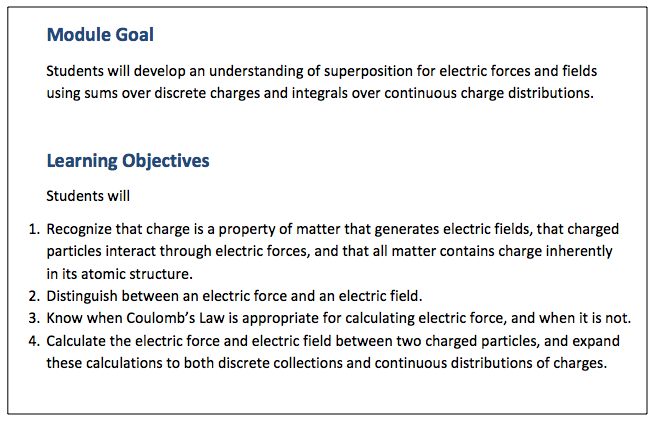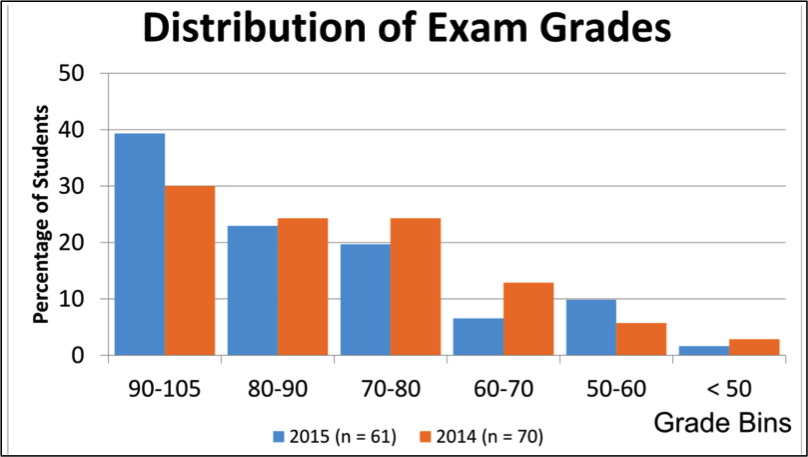PHYS 113: Introductory Physics for the Life Sciences

Tyler McCleery, Physics, working with Shane Hutson, Associate Professor of Physics
Overview
Professor Shane Hutson and BOLD Fellow Ty McCleery had observed that introductory physics students, particularly life science majors, tend to struggle with forming structured knowledge of topics in electrostatics, such as electric charge distributions, fields and forces, after reading a textbook. Further hindering this conceptual understanding, students struggle with the abstract mathematical ideas behind calculating the superposition of continuous charge distributions and using Gauss’ Law to make symmetry arguments about such distributions. Ty and Shane therefore created a blended learning module that encourages students to simultaneously build the conceptual framework as well as the technical skills needed to successfully analyze electrostatics problems.
They laid out a goal for the module and used that to guide their articulation of several specific learning objectives:
The module was developed for the class Introductory Physics for the Life Sciences, which emphasizes the use of biologically-relevant problems to help students connect basic principles to useful applications.
The module guides students through the development of a concept map that relates each concept to its physical and ultimately biological meaning. This map evolves over the course of the module by allowing students time to collaborate and share their ideas. Below is an example of a student-generated concept map, developed using the CMAP tool:

The module also provides a video tutorial on the calculus-based mathematics with in-video questions to help students check for understanding.
They hypothesized that this blended learning module — using student-designed concept maps and an interactive math tutorial in a biologically-relevant context — provides students the opportunity and incentive to build both the conceptual foundation and the technical skill needed to solve electrostatics problems, resulting in higher student achievement. Effectiveness of these tools was quantified by data collected from in-class “clicker questions,” standard homework assignments, and a comprehensive test. These data were compared to a previous semester to determine the success of achieving greater student understanding of the material.
Assessment
They compared grades on the exam that tested student understanding of electric fields and forces from 2014 (no module) and 2015 (module), observing an improvement in 2015. Specifically, more students demonstrated excellent performance in 2015 (i.e., grades in the 90-105 range) and fewer demonstrated very poor performance (below 70).
Additionally, they briefly analyzed the student-generated concept maps for trends in student misunderstanding to inform future instruction in this course, considering three examples of concept maps from students who performed very well on the exam, three examples from students who performed adequately on the exam, and three examples from students who did not perform well on the exam. They observed two concept map features that corresponded with strong exam performance in this limited sample: circular connection of the key concepts of charge, force, and field, and direct connection of superposition to electric field equations.
View a Presentation Posterdescribing the project.



